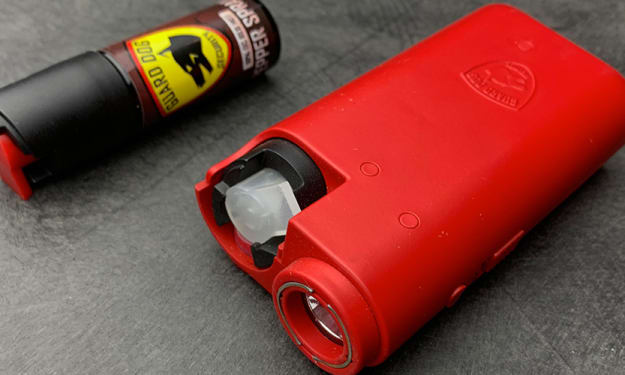Exploring the Essential Role of the Firefighter Knife!
Firefighter Knife

In their line of work, firefighters—often referred to as the heroes of the modern era—face many difficulties. Of all the tools they have, the firefighter knife is one of the most important. It can be used for a variety of tasks that are essential to both personal safety and rescue operations. This knife is the epitome of dependability and versatility—it can be used to cut through barriers and even offer a lifeline in an emergency. Let's examine this indispensable tool's characteristics, applications, and important role in the firefighting industry in more detail.
The Anatomy of a Firefighter Knife: Design and Features
When examining the firefighter knife more closely, its design reveals several specialized features made specifically for the demands of fighting fires. At first glance, this knife may seem similar to other utility knives. These knives are typically made of premium titanium or stainless steel, which gives them durability and corrosion resistance to withstand the rigors of harsh environments.
The serrated blade on these knives is one of their defining characteristics. It is made to cut through a variety of materials, such as metal surfaces, ropes, and straps, with ease during rescue operations. A blunt tip at the end of the blade is another feature of many fire knives that helps to prevent unintentional punctures that could endanger victims or firefighters alike.
The knife's ergonomic handle allows for a firm grip even in wet or gloved conditions, giving users the most control and accuracy possible while using the tool. Certain models have rubberized or textured grips to improve handling in hard situations and guarantee the knife stays securely in your hand when every second matters.
Versatile Applications: The Many Uses of the Firefighter Knife
The firefighter knife has many uses beyond just cutting, and it is a vital tool for efficient rescue and firefighting operations. Firefighters use their knives to quickly cut through harnesses and seatbelts during vehicle extrication to free stranded victims from the wreckage and expedite medical attention. A fighter knife is a useful tool in structural firefighting situations because it can be used to break through doors, windows, and other barriers that prevent victims or fire suppression equipment from being accessed.
With its easy-to-use serrated blade, firefighters can cut through construction debris and make entry points with little difficulty. Furthermore, this knife frequently functions as a window punch due to its hardened tip or integrated mechanism that breaks tempered glass rapidly. This feature gives firefighters a dependable way out or access in emergency scenarios like entrapment or rapid egress, potentially saving lives in dire situations.
Vehicle Extrication:
Firefighters deal with intricate scenarios in which victims might be imprisoned inside damaged automobiles when performing vehicle extrication operations. In these situations, the firefighter's knife is essential because it offers a quick and efficient way to cut through harnesses, seatbelts, and other restraints that could impede rescue attempts.
Firefighters can speed up the provision of medical attention and make it easier for stranded victims to be safely removed from the wreckage of their vehicles by acting swiftly to free them. The knife's serrated blade also comes in handy for slicing through airbags, upholstery, and other objects that block victims' paths, allowing rescuers to get to them quickly.
Structural Firefighting:
When responding to structural fires, firefighters frequently run into barriers like barred windows, locked doors, and security measures that prevent them from getting to victims or fire suppression equipment. Responders can quickly break through these barriers with the help of the firefighter knife, enabling them to carry out search and rescue operations.
The knife's sturdy design and serrated blade allow it to cut through a variety of building materials, such as metal, drywall, and wood, giving firefighters the ability to get through debris and reach vital areas inside the building. Additionally, the knife's window punch function is quite helpful in shattering tempered glass windows, giving firefighters a quick way to escape or get ventilation in an emergency.
Support for Emergency Medical Services (EMS):
A firefighter knife is a useful tool for emergency medical services (EMS) personnel that goes beyond its use in fighting fires. It provides vital instruments for patient care and rescue operations. EMS personnel may have to quickly immobilize patients or remove them from dangerous situations during medical emergencies.
Responders can effectively access and treat injuries by cutting through clothing, harnesses, and other materials with the sharp blade of a firefighter knife. Moreover, the window punch function of the knife can be employed to break glass doors or car windows, enabling the quick extraction of critically ill patients. EMS workers can improve patient outcomes in difficult emergencies by adding the firefighter knife to their toolkit, which helps them provide prompt and effective medical care.
Safety and Maintenance: Best Practices for Firefighter Knife Use!
Even though a trained professional's firefighter knife is an invaluable tool, maintaining it properly and adhering to safety regulations is crucial to ensuring its longevity. Firefighters go through extensive training to become proficient with the safe handling and application of knives, with a focus on methods to reduce the possibility of harm coming to either themselves or others.
To maintain these knives' functionality and dependability in the field, routine maintenance is necessary. Knives should be well-cleaned and dried after every use to avoid contamination and corrosion. To preserve their cutting edge and ensure quick and effective operation in an emergency, blades may also need to be sharpened regularly.
As part of routine equipment checks, fire departments frequently put strict protocols in place for inspecting and replacing fighter knives. To reduce the possibility of failure during crucial operations, worn-out or damaged knives are quickly replaced, highlighting the significance of preventive maintenance and adherence to safety regulations.
About the Creator
Mai Sophia
A Writer/blogger by day, a knife enthusiast and survivalist by night. I've reviewed a lot of products and have helped people make the right purchase






Comments (1)
Hey there, just wanna let you know that this needs to have the disclaimer added to the beginning or ending, stating that it was created with the help of AI 😊